In last post of this series, I talked about my lab setup. In this post I will walk through the load balancer configuration that needs to be in place for supporting the distributed install.
If you are not following along this series, then I recommend reading earlier posts of this series from below links:
1: Introduction & Reference Architecture
2: Lab Setup
Although it’s not mandatory to have the load balancer configured when kicking the distributed install, as we can configure it post vRA deployment, but it is recommended to configure this before attempting the install.
I am using NSX 6.4 in my lab for load balancer. You can choose the supported load balancer of your choice.
I deployed a dedicated Edge GW (size=large) and attached my dvPortgroup named “Production” as uplink. I also added 3 IP’s on the uplink interface (one primary and 2 secondary ip) which will be used during VIP configuration.
Below slide show demonstrates the ESG deployment steps.
Once the Edge GW is deployed, navigate to the Load Balancer tab and enable following on Global Configuration page:
- Load Balancer
- Acceleration
- Logging
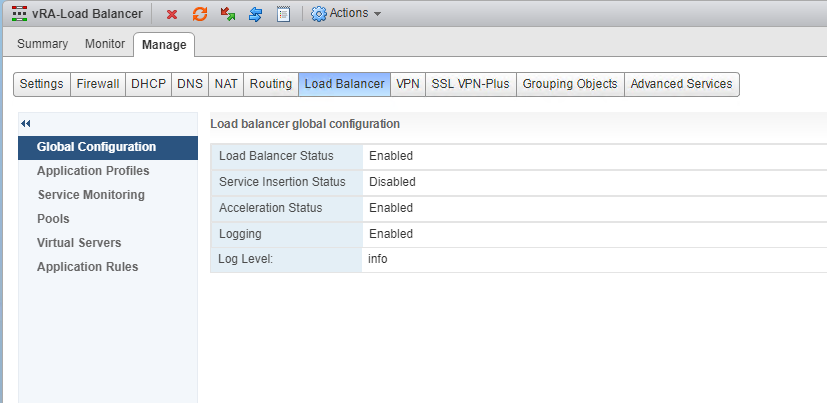
Next is to create application profile for the IaaS-Web, IaaS-Manager and vRA appliances.
Go to Application profile page and click on green + button to create 3 application profiles as shown below
IaaS-Web
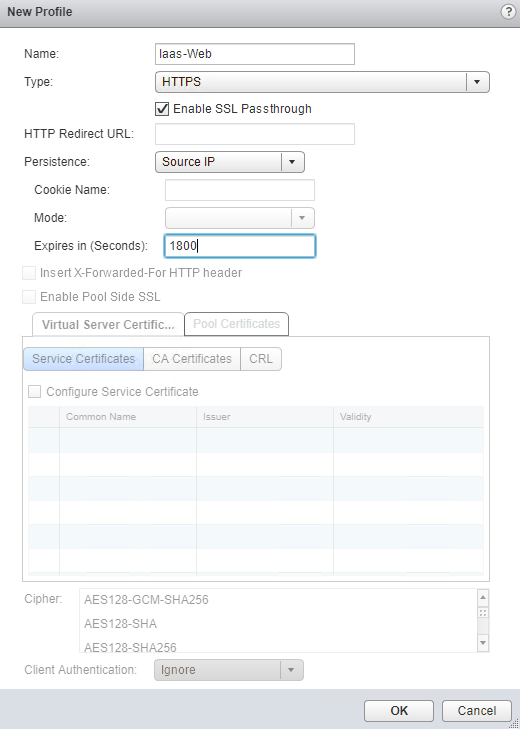
IaaS-Manager
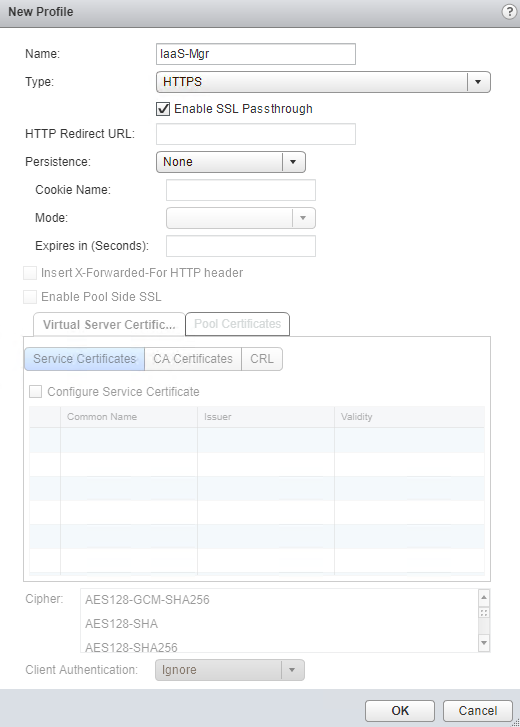
vRA Appliances
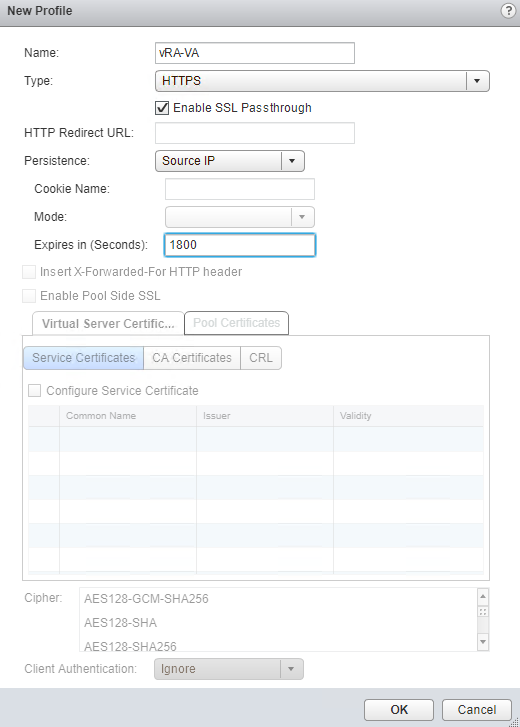
Note: If you are using signed cert for ESG in your environment, then you need to import the certs on ESG first and de-select “Enable SSL Pass through” during application profile creation.
Service Monitors : Create 3 service monitors as shown below
For Iaas-Web Server
|
1 2 3 4 5 6 7 |
interval: 3 Timeout: 10 Max Retries: 3 Type: HTTPS Method: GET URL: /wapi/api/status/web Recieve: REGISTERED |
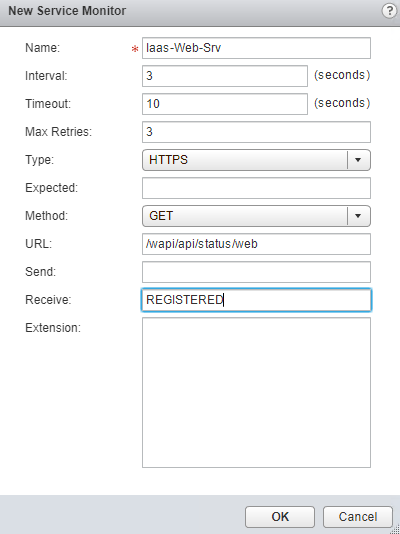
For Iaas Manager
|
1 2 3 4 5 6 7 |
interval: 3 Timeout: 10 Max Retries: 3 Type: HTTPS Method: GET URL: /VMPSProvision Recieve: ProvisionService |
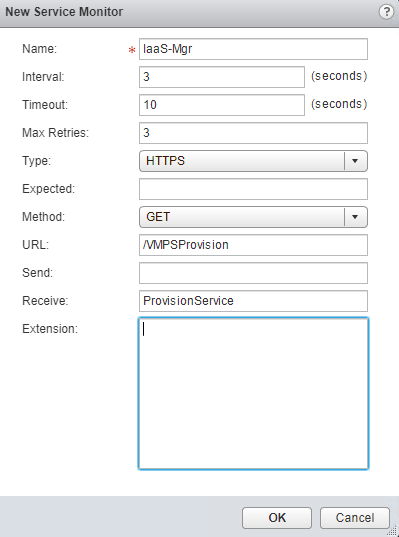
For VRA Appliance
|
1 2 3 4 5 6 7 |
interval: 3 Timeout: 10 Max Retries: 3 Type: HTTPS Expected 204 Method: GET URL: /vcac/services/api/health |
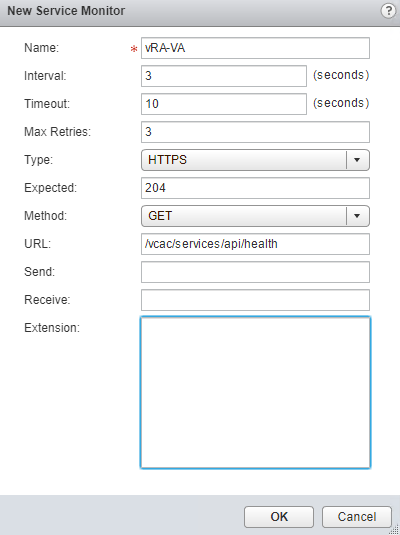
Pools
Create 3 pools for the IaaS Web, Iaas Manager and the vRA VA
Iaas Web Pool
- Name: As per your choice
- Algorithm: vRA Load Balancer documentation recommends to use Least connections, but Round Robin works just fine.
- Monitors: Select the service monitor which you created for web server in previous step.
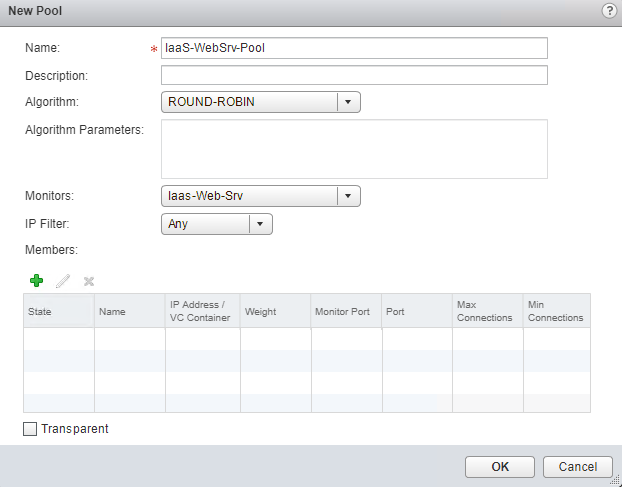
Define the pool members one by one by clicking on green + button under Members.
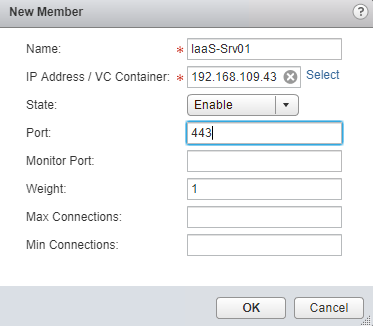
I have only 2 servers which will be acting as Iaas Web servers in my distributed install. In your environment you may have more. Add all your Iaas Web servrs in your server pool.
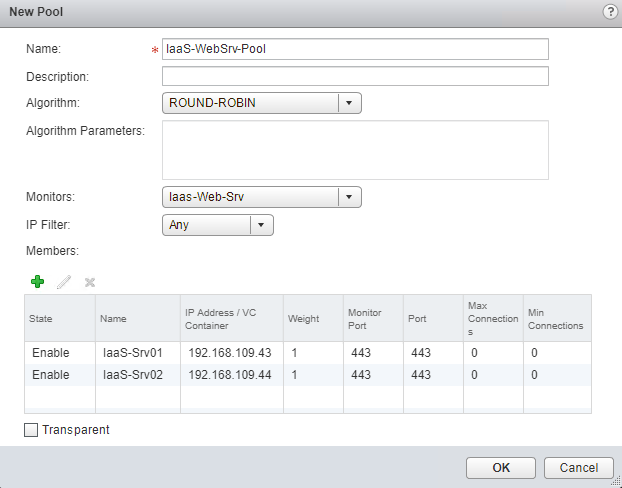
IaaS Manager Pool
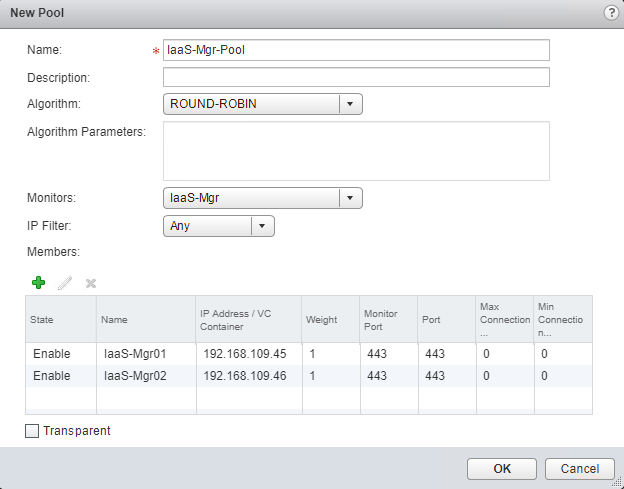
vRA Appliance Pool
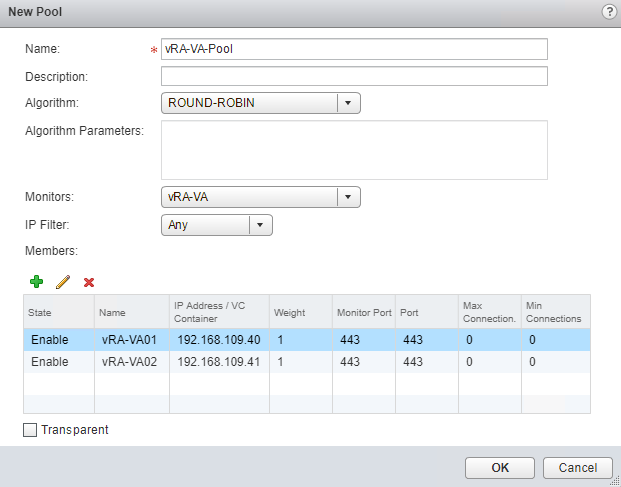
vRA Appliance Console Pool
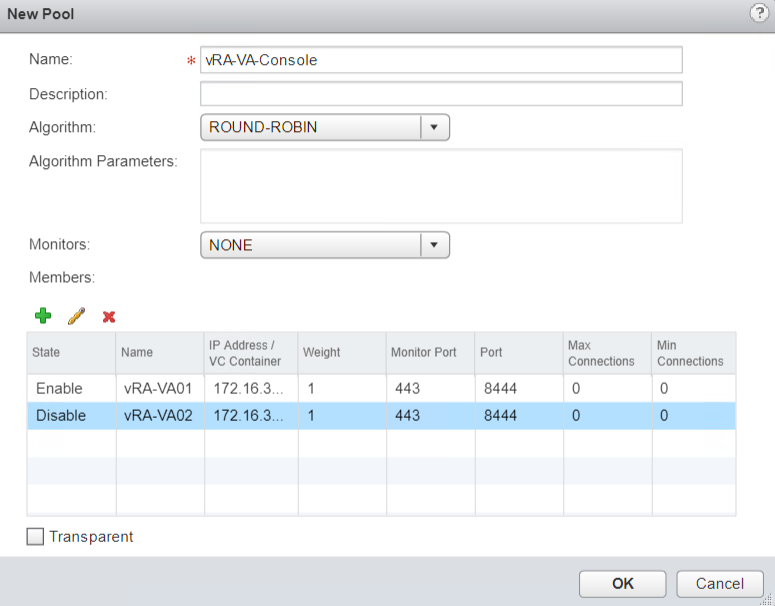
Virtual Servers
We need to create 3 virtual servers corresponding to the web, manager and vRA appliance. This is the place where you define your Virtual IP’s for the clustered solution.
This is how my virtual server configuration looks like.
vRA VA VS
- Application profile: Select the profile created for the vRA appliance.
- Name: Provide a name as per your environment nomenclature.
- IP Adrress: Select the appropriate IP which you configured on your ESG interface during deployment. This IP will serve as VIP for the item for which you are creating virtual server.
- Protocol: https
- Port: 443
- Default Pool: Pool corresponding to vRA appliance
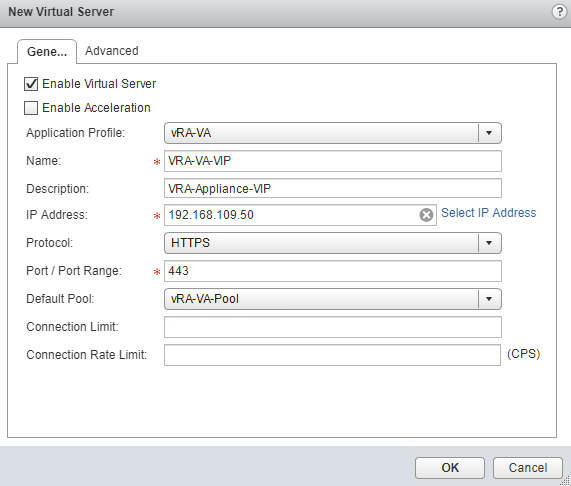
vRA VA Console VS
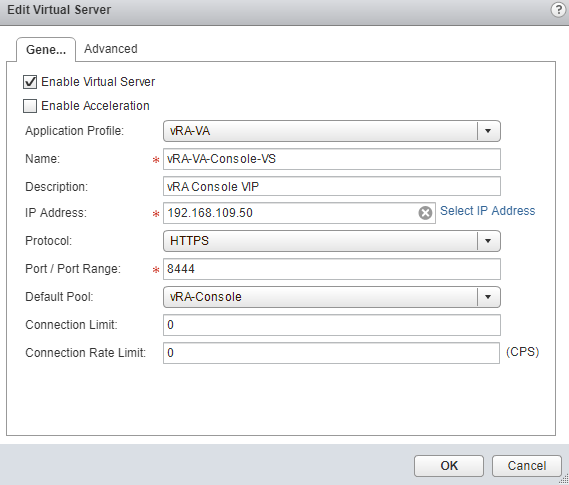
IaaS Manager VS
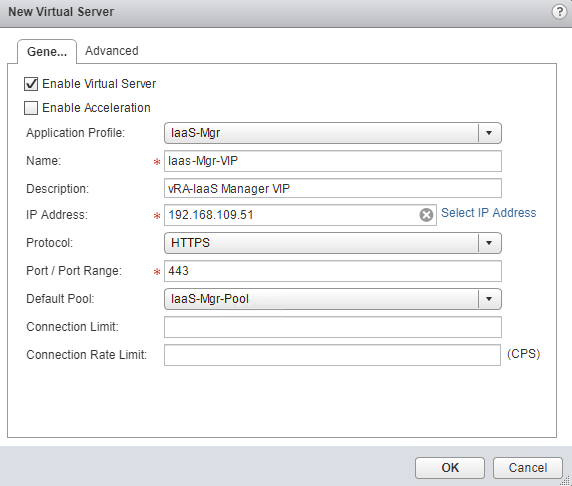
IaaS Web Server VS
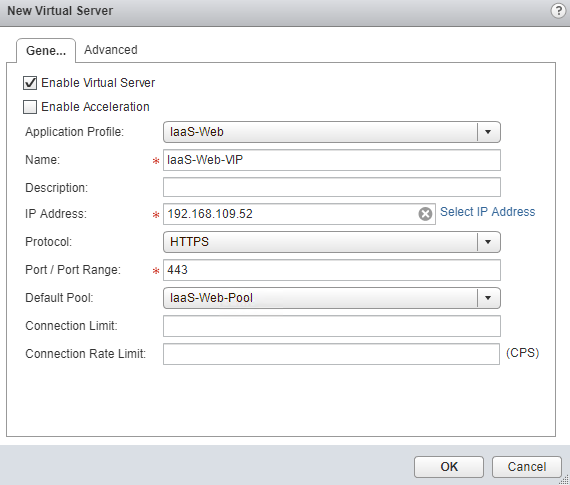
Now we are done with load balancer configuration, but we need to tweak this configuration before we start the vRA deployment.
Note: At this point the status of your pool will show as Down (becase we have not installed any services yet in any of the server yet)
You will see this page during vRA deployment. This page is actually telling you to disable the secondary members of the pool which we created earlier and temporarily disable the health monitor associated with pool. This will be enabled once vRA deployment is completed.

Go back to “Pools” and edit all the 4 pools which you created and disable all secondary members. In every pool there should be only one member active (first member). Also set the monitors to NONE.
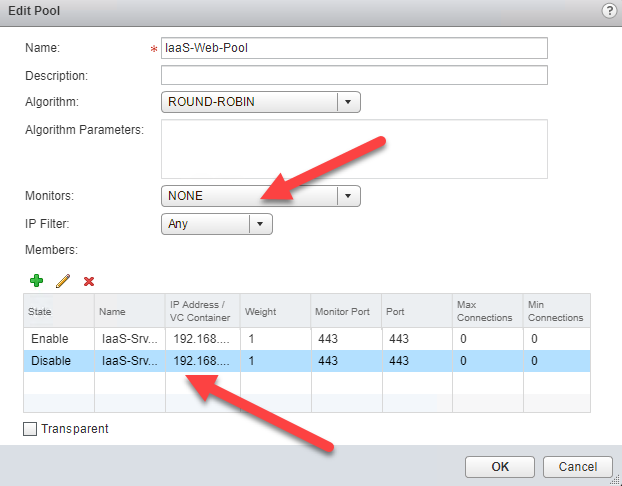
And that’s it for this post.
In next post of this series I will walk through the vRA distributed deployment.
I hope you enjoyed reading this post. Feel free to share this on social media if it is worth sharing
